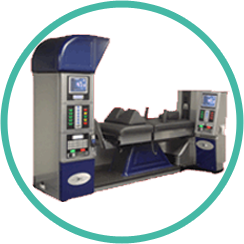Pain. For some Mansfield residents, it’s an everyday part of life — but it doesn’t have to be, thanks to the work of holistic health techniques like Applied Kinesiology.
Science Doesn’t Understand Your Body
Modern medical science has one significant problem in dealing with the human body: science. The scientific method involves breaking things down into their smallest variables so that all but one of those variables can be controlled, and the last variable tested. But when you’re dealing with a human body, the scientific method cannot be vigorously applied, because human bodies cannot be separated into variables that are controllable. Thus, the term ‘holistic medicine’ developed as a way to label those medical practices that attempted to examine the human body as a whole — whole-istically — instead of as a series of controllable variables.
One of those holistic systems is Applied Kinesiology — the study of movement and its application to health. Applied Kinesiology draws on truths discovered in Ayurvedic Medicine, Traditional Chinese Medicine (TCM), nutrition, and chiropractic medicine.
The Foundations
Applied Kinesiology postulates a three-legged ‘stool’ of health: the Chemical (including hormonal and nutritional), Structural (including skeletal, muscular, and connective), and Mental (including emotional) legs, when working properly together, keep your entire being healthy and working correctly. Those three systems are more tightly related than most modern Western minds want to understand; we’re taught, after all, to break things down into smaller parts for study!
The essence of AK is the understanding that because all three elements of health are closely interlinked, it is possible to use any one of the systems to accurately diagnose problems in the other two. Because the structural system is the easiest to test, AK practitioners are taught how to access information about the other areas by performing simple-seeming tests of muscle strength on their patients. For example, if you have mild pain in the area of the heart, the correct AK test is to test the strength of the muscles along what TCM calls your ‘heart meridian’ — the muscles along the underside of your arm.
Once the diagnosis has been established, an AK practitioner will question you about many aspects of your daily life, and often suggest a combination of nutritional, structural, and mental exercises. In the case of pain near the heart, they might suggest consuming more fish and less seeds and nuts, stretching your ribs and diaphragm regularly, and meditating to reduce your heart rate on a daily basis.
With all three legs of the stool of health satisfied, the client will improve, and the pain will slip away unnoticed — the kind of victory that modern medical science simply isn’t capable of.
Cold Laser Treats, Back Pain, Neck & Shoulder Pain, Wound/Burn Healing, Bone Healing

The first non-invasive body contouring procedure to remove excess fat.(really.)

We offer the latest cutting edge technology in the non-surgical treatment of serious chronic lower back pain and sclatica
